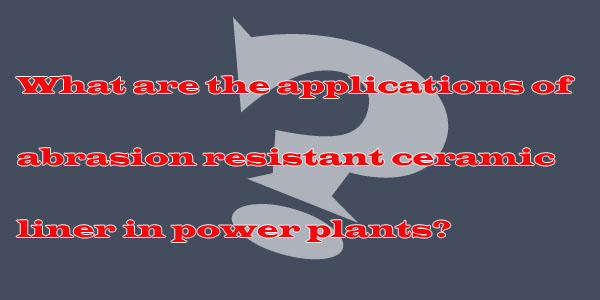Top articles
- High-purity 99.7% alumina ceramics helpful to semiconductor manufacturing technology
- Alumina Ceramic Grinding Balls: High-Efficiency Solutions for Industrial Grinding
- How to Select Suitable Wear-Resistant Ceramic Lining Tiles in the Mining Industry
- Advantages of Ceramic Rubber Composite Liners in Industrial Applications
- How to Install Alumina Ceramic Liners for Long-Lasting Adhesion?
- 99% alumina bulletproof ceramics are the preferred materials for protective devices
- Alumina Ceramic Substrates:Characteristics,Advantages,Disadvantages,and Applications
- Why do alumina industrial ceramics wear out?
- The reason of abrasion resistant ceramic tiles falling off when pasted on equipment
- Seven aspects of advantages & applications of alumina ceramic substrates
Latest articles
- High-purity 99.7% alumina ceramics helpful to semiconductor manufacturing technology
- Alumina Ceramic Grinding Balls: High-Efficiency Solutions for Industrial Grinding
- How to Select Suitable Wear-Resistant Ceramic Lining Tiles in the Mining Industry
- Advantages of Ceramic Rubber Composite Liners in Industrial Applications
- How to Install Alumina Ceramic Liners for Long-Lasting Adhesion?
- Welcome to EXPOMIN 2025
- 99% alumina bulletproof ceramics are the preferred materials for protective devices
- Alumina Ceramic Substrates:Characteristics,Advantages,Disadvantages,and Applications
- Why do alumina industrial ceramics wear out?
- Chemshun Ceramics Chinese New Year Holiday Notice
Your browsing history

What are the applications of abrasion resistant ceramic liner in power plants?
What are the applications of abrasion resistant ceramic liner in power plants?
1. The application for ash system
For power plants that use water to remove ash and slag discharge systems, the inlet and outlet sections of the slag pump, slag ditch nozzle, etc. are the most easily worn parts. so abrasion resistant ceramic is best choice for wear solution by pasted with epoxy resin adhesive.

2. Application in coal transportation system
Most wear damage of the coal transportation system equipment is mainly scratches and impacts. The most easily worn parts are falling coal pipes, three links, baffles, etc. Usually the anti-abrasion methods selected by the power plant are manganese steel plate, this method is not suitable, the reason is that the steel plate is not wearable, short useness period, And simple sticking bring overhaul workload to maintenance personnel.most construction engineer will prefer to use abrasion resistant ceramic tile embedded in special rubber composite liner, its wear resistance, impact resistance, the degree of internal wall lubrication have greatly improved.
3. Application in the milling system
Most of coal-fired power plant pulverizing system wears mainly by pulverized coal collision, collision and impact. High-speed pulverized coal gas flow on the milling system equipment, especially on the coal mill outlet pipe, primary air pipe elbow, coarse powder separator inlet and outlet pipe wear is particularly severe. The wear resistance of cast stone is higher than that of normal steel plates. However, its biggest drawback is brittleness and weight. It is not only constrained by the safety system of the equipment system, but also easily broken during installation. It is also because of the thicker thickness and large volume of the cast stone plate that the flow cross-section of the equipment is reduced. The addition of the flow rate also increases the degree of wear. Its service life is also difficult to compare withabrasion resistant ceramic liners.








